Carl Zeiss 18x "Tersexmo"

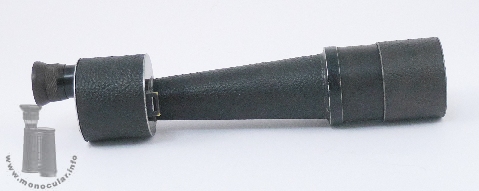
| Das Carl Zeiss Jena "Tersexmo" wurde nur kurz vor dem 1. Weltkrieg mit Porro-1-Prismen gebaut (s. Foto innen). Es ist mit seinen Kennwerten von 18x50 der Vorläufer des späteren Nachkriegsmodells "Delfortmo" 18x50, jedoch mit einem längeren runden Prismengehäuse und einer am Gehäuseboden angeschraubten Trageriemenöse, wobei ersteres wiederum eher dem Gehäuse des "Noctar 7x50" ähnelt. Der obere dreifach verschraubte Deckel ist mit dem Zeiss-Linsenlogo und 18x sowie der Seriennummer 238005 beschriftet. Es dürfte daher in 1911 , bereits vor dem binokularen Tersex-Modell gefertigt worden sein (s. Foto vergleich Monokular und Binokular), ggf. als Versuchsmodell (vgl. a. Seeger, 2010, S. 649; Zeun 2013, S. 106). Am breiten Ende des konischen Objektivtubus ist ein gerader Objektiv-Linsentubus mit ausziehbarerer Sonnenblende. Am Metallring dieses geraden Tubusses wurde ein Metallstück eingelötet, wo bei einem Fernglas der untere Brückenarm ansetzt. Insofern könnte die Gußform von oder in Richtung einer Fernglasgußform sein, die für das monokulare "Versuchsmodell" bearbeitet wurde. Am Prismengehäuse lassen sich jedoch keine Spuren eines Brückenansatzes finden. Das Monokular würde der linken Hälfte entsprechen. Das 18x ist aus Aluminium, die Trageriemenöse aus Messing und die Augenmuschel aus Kunststoff. Prismendose, Objektivtubus und Sonnenblende sind mit Hartgummi ummantelt, die anderen Teile schwarz lackiert. Die komplett umlaufende Dioptrienskala ist bei Null und +/-5 markiert. | The Carl Zeiss Jena "Tersexmo" was made shortly before WWI and had Porro I prisms built in (s. Foto innen). Having the specifications of 18x50 it is the forerunner of th elater post-war model "Delfortmo" 18x50, but comes with a longer round prism housing and with a strap lug attached to the bottom of the housing. Yet, the housing resembles more the desing of the "Noctar 7x50". The top cover palte has three screws and is inscribed witht he Zeiss lens logo and "18x" as well as the erial nubmer 238005. Hence, it was probably made in 1911 even before the binocular Tersex models (cf. photo comparing monocular and binocular), probably as a test model (cf. also Seeger, 2010, p. 649; Zeun 2013, p. 106). At the thicker end of the conical tube is a straight objective lens frame witha n extendable ray-shade. There is a small metal piece welded into a recession of the thicker metal ring where there would be the lwoer bridge arm of the binocular version. Insofar this also might be a half of the binocular mould or a approximate mould for the binocular which was machined for the monocular test model. No traces of a bridge can be found on the prism housing, though. The monocular corresponds to the left half of a Tersex binocualr. The 18x is made of aluminium, the strap lug made of brass and the eyecup made of Bakelite or hard rubber. The prism box, the objective tube and the ray-shade are covered with Ebonite, the other parts are lacquered black. The dioptre scale running fully around is marked at zero and +/-5. |
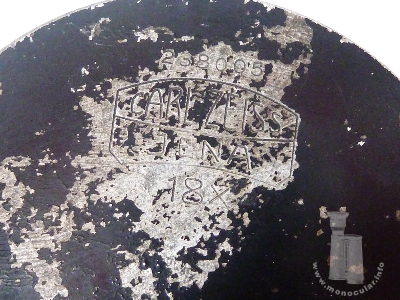
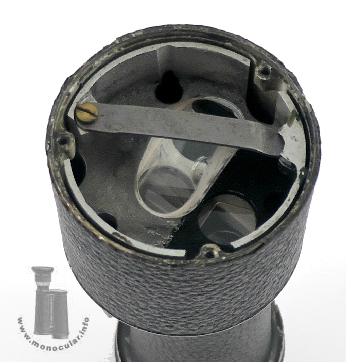
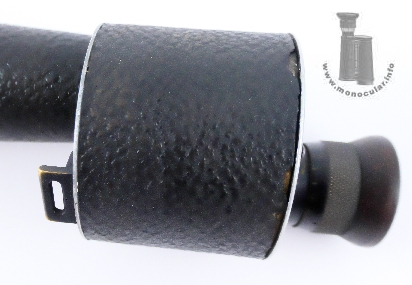
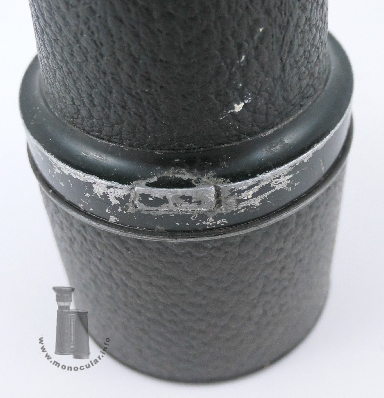
| Das Tersexmo ist 278 - 283 mm lang und mit Sonnenblende bis zu 30 mm länger. Das Prismengehäuse ist 50mm lang und 60 mm im Durchmesser. Der konische Tubus verbreitert sich von 32 auf 58 mm im Durchmesser, der gerade Objektivtubus misst 57 mm, dessen dickerer Anfangsring sowie die Sonnenblende 60 mm im Durchmesser.Das Okularstück ist 24mm, der Fokussierungsring 28mm und die Augenmuschel 32,5mm im Durchmesser. Das 18x50 wiegt 522 g. | The Tersexmo is 278 - 283 mm long and is up to 30 mm longer with its ray-shade. The prism housing is 50mm long and 60 mm in diameter. The conical tube increases from 32 to 58 mm in diameter, the straight objektive tube measures 57 mm, its thicker ring as well as the ray-shade measure 60 mm in diameter. The eyepiece is 24 mm, the focusing ring 28 mm, and the eyecup 32.5mm in diameter. The 18x50 weighs 522 g. |
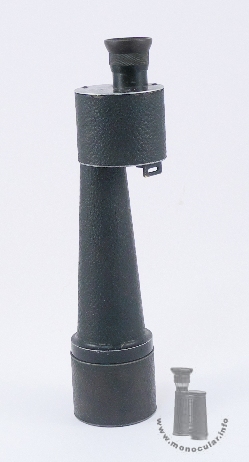
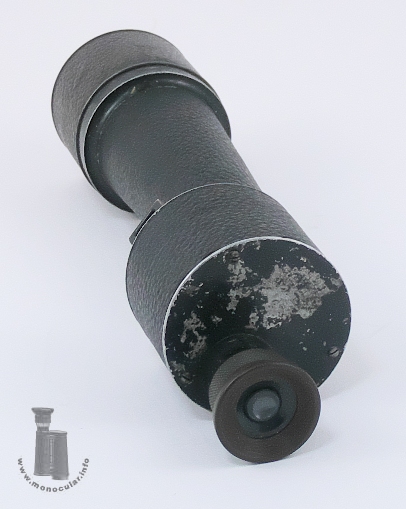
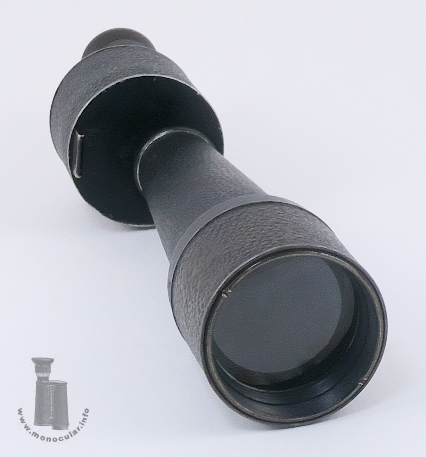
Fotos: Zeun

